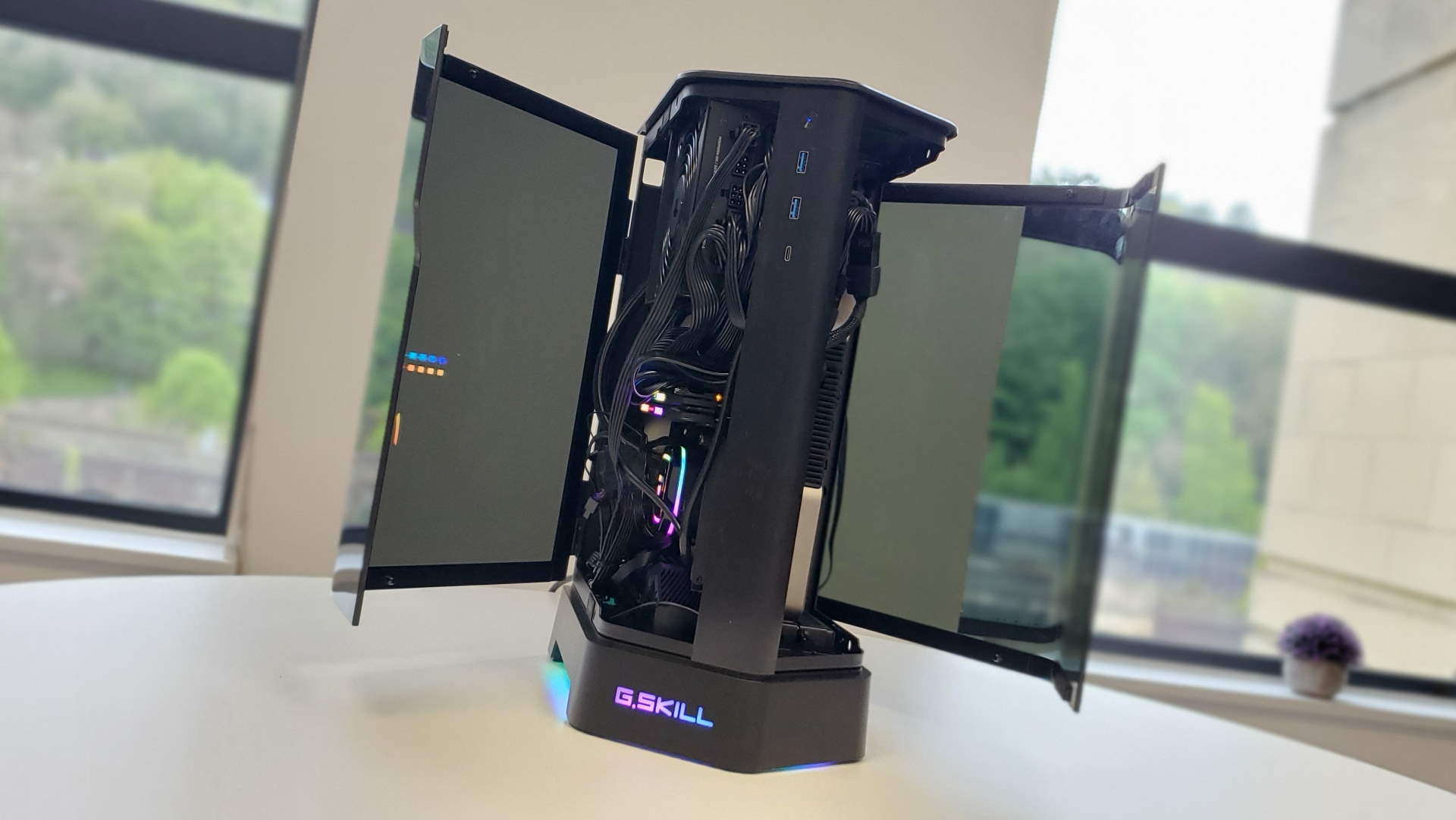Our Verdict
G.Skill has made a mini-ITX chassis that's easy on the eye and almost as easy to build into. Only some minor quirks around the PSU, pricing, and the last-gen riser cable really hold it back.
For
- Sleek, black aesthetic
- Easy access via hinged doors
- Space for large AIO coolers
- Plenty of GPU space
Against
- Tight around PSU cables
- No extra cable routing
- High price
PC Gamer's got your back
I love a swinging tempered glass side panel. And when you throw me a mini-ITX chassis that has two of them, hinged on either side of the vertical mounting spine of the case, well… I get a little excited. Add some underslung RGB lighting, like some drift-happy modded sports car, and you've got the G.Skill Z5i mini-ITX PC case.
Modern mini-ITX gaming chassis are not like the minuscule tech boxes of old. The best mini-ITX PC cases now need to be able to cope with the largess of frame that today's graphics cards bring to the table. The desire for dual- and sometimes triple-slot GPU support means that we're talking about mini-towers, but with a design that even a micro-ATX board cannot accommodate.
What I'm saying is; the G.Skill Z5i isn't small. In fact, it's actually larger in stature than the NZXT H1 V2, which is itself larger than its flame-inducing forebear. But it comes with a still relatively sleek design, aided by the curved-to-a-point doors which give the Z5i its unique wedge shape.
There are effectively three compartments in the G.Skill chassis. On one side is the motherboard and PSU, on the other side is the GPU bay, and at the rear is enough space to drop in a full 280mm radiator for an AIO CPU cooling loop. That actually makes building into the Z5i pretty straightforward, especially as the swinging doors can easily be lifted from their hinges to be entirely removed.
That gives you a lot of elbow room to work with, and there are none of the height constraints around memory DIMMs that have been a slight checkmark against the NZXT and Hyte chassis I've toyed with. As alluded to earlier, there's space here for even a triple-slot graphics card, which is pretty spectacular really. That also means there should be plenty of space for the currently-favoured 2.5 slot cards to spin their fans without issue.
Though it should be said that if you want some anachronistic 3.5-inch storage in there you're going to shorten your potential GPU space to just 230mm. Don't listen to them, spinning media is dead, man.
So yes, if you want a high-performance graphics card dropped into your mini ITX machine the Z5i will accommodate it, though you're also going to need to make sure you can find an SFX power supply capable of coping with its demands. And you will need to do that yourself as there is no option for G.Skill to ship you a case with a PSU built-in.
No problem, you might think, you've built enough PCs in your time to be able to install a PSU when you're sticking the rest of the gear in your new mini-ITX machine. Except, where the Z5i gives you ample space to work in for everything else, the PSU is a squeeze.
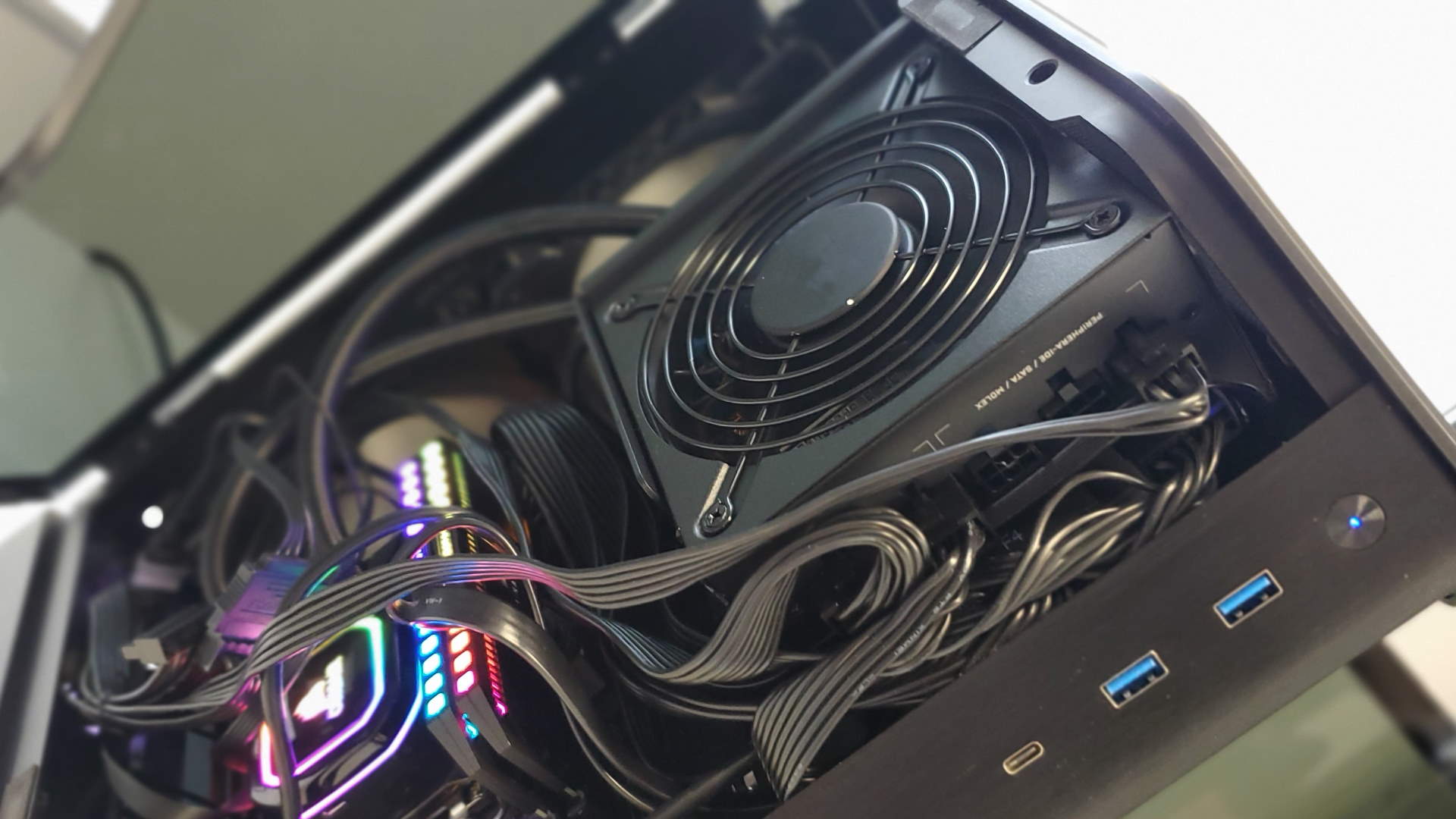
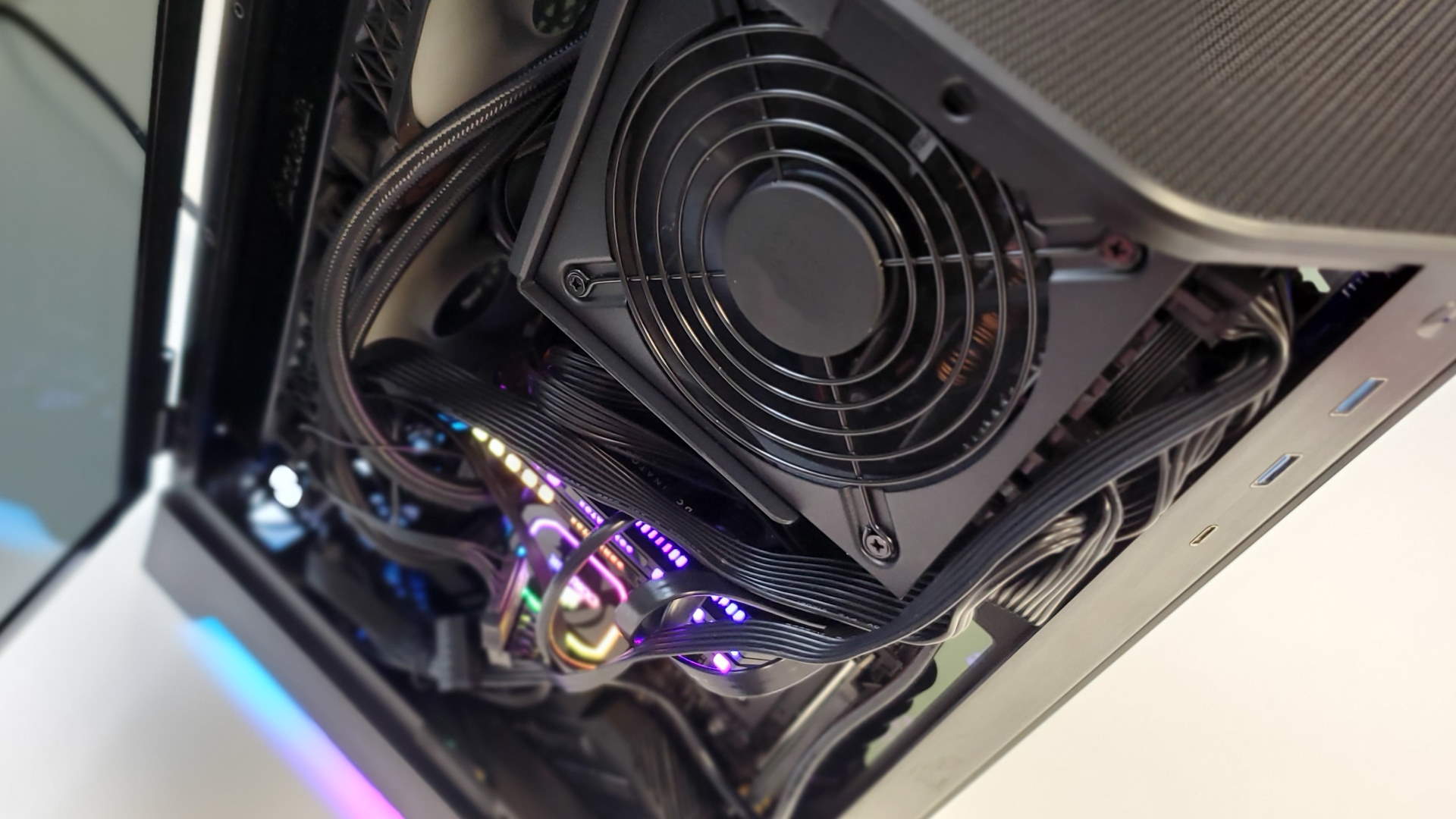
Maybe if you go for a non- or semi-modular supply you might be okay, but with the modular PSU I was using the cabling jutted out towards the front of the case to the point where I was having to bend it uncomfortably just to shut the side panel.
The lack of good cable routing makes creating a good-looking system a trial, especially for one with such a can-I-be-bothered attitude to cable management as yours truly.
Another thing which might blight your build is the fact the bundled riser cable is only rated as a PCIe 3.0 x16 connection, where other chassis have ones rated as PCIe 4.0. Honestly, there's enough bandwidth on a full PCIe 3.0 x16 slot that it's not an issue with higher-end GPUs. Interestingly though, it's at the lower end that it might become a problem—where you've got something like the RX 6500 XT, which uses a PCIe 4.0 x8 connector, you will actually only have half the bandwidth of a PCIe 3 slot available.
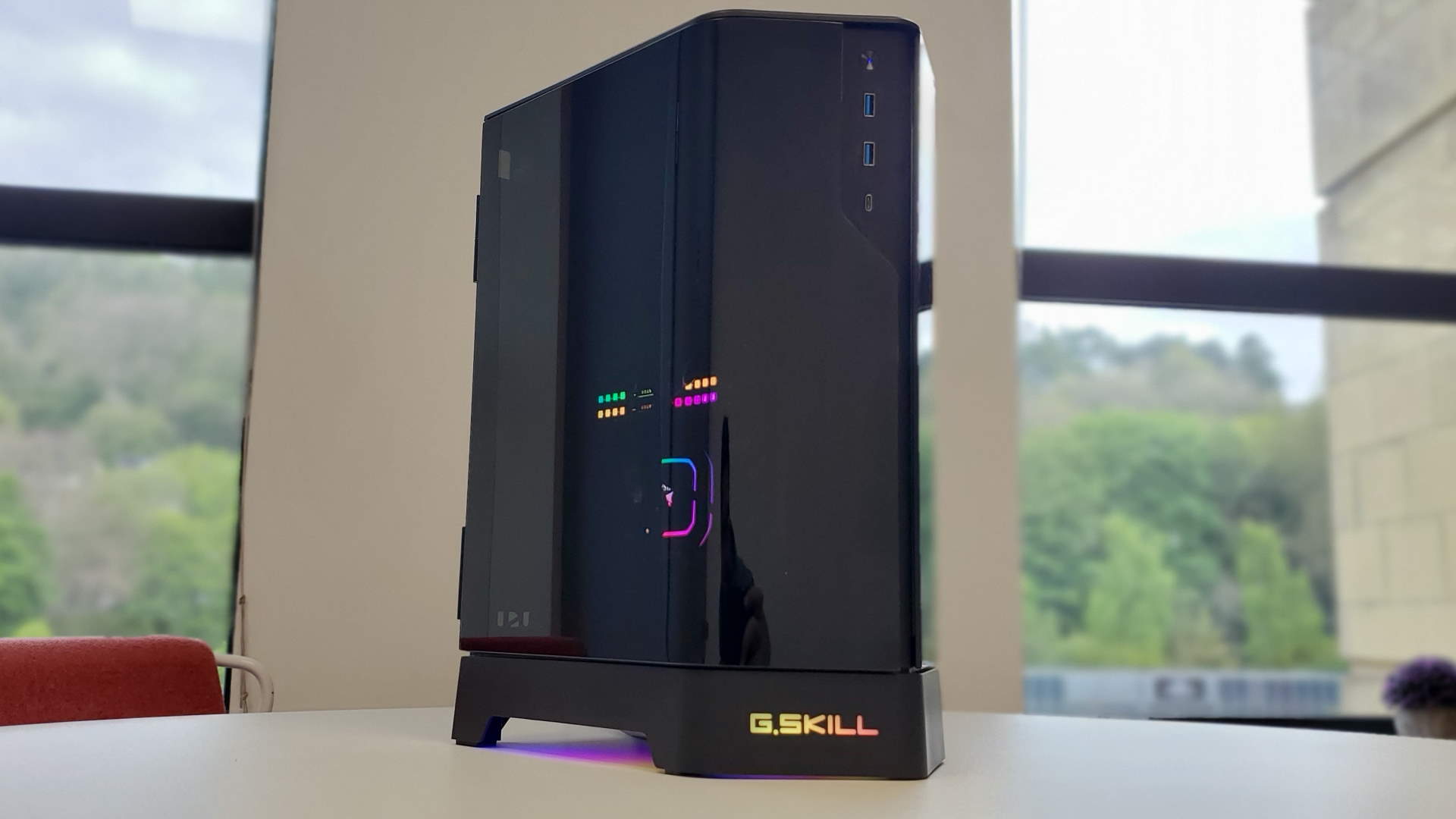
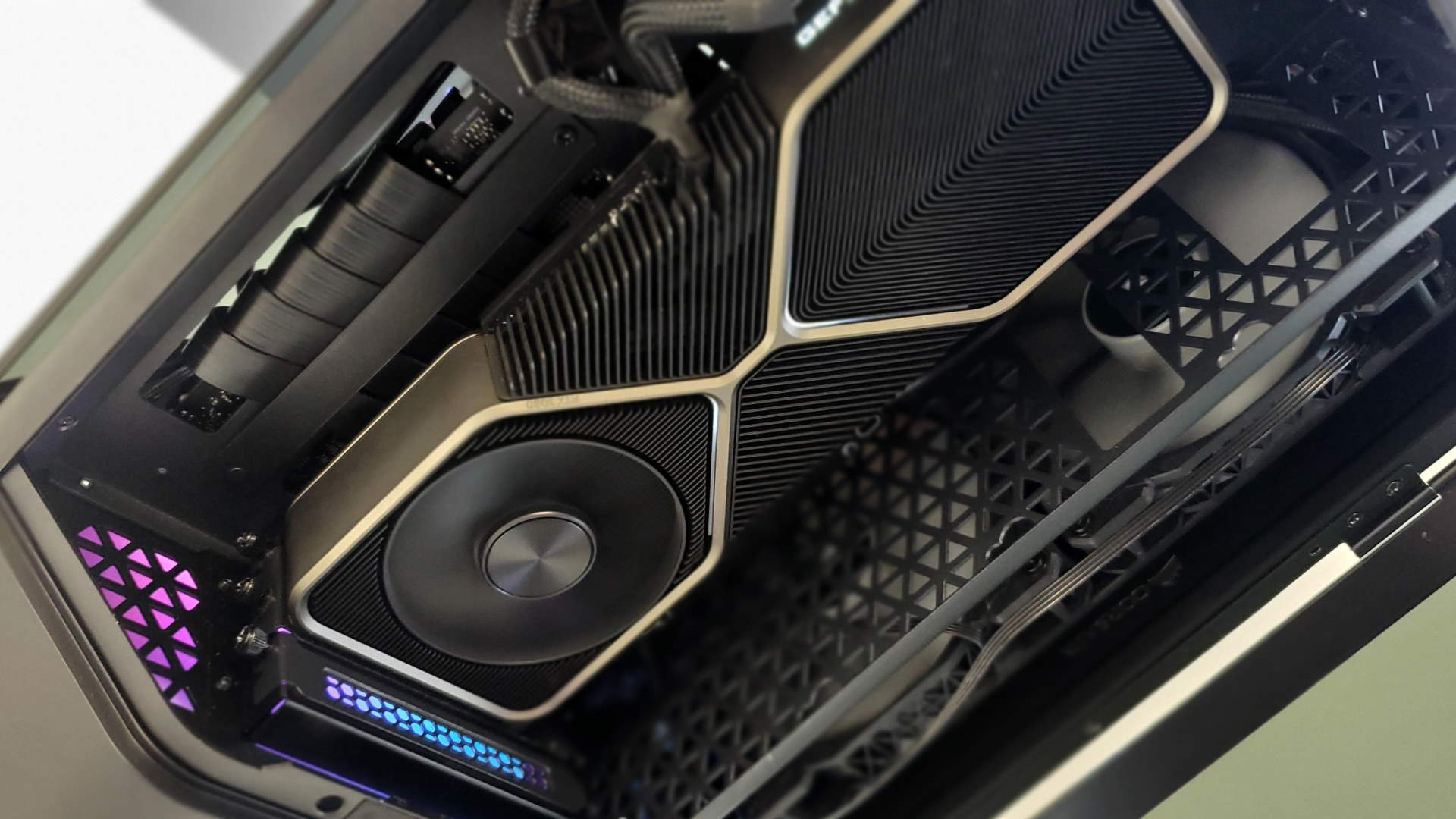
Pricing is also a bit of an issue, too. When you've got a chassis in the Hyte Revolt 3, which comes with a 700W PSU pre-installed for around the same price as this barebones chassis, there's something off about your costing.
But it does look great. I'm definitely into the sleek, black aesthetic, and the heavily tinted glass hides all my cable management sins from prying eyes. Though it's definitely worth adjusting the underslung RGB, as the rainbow 'G.Skill' logo really sucks the cool out of the case more efficiently than the 280mm radiator I had comfortably installed in the back of the case.
G.Skill has made a mini-ITX chassis that's easy on the eye and almost as easy to build into. Only some minor quirks around the PSU, pricing, and the last-gen riser cable really hold it back.

Dave has been gaming since the days of Zaxxon and Lady Bug on the Colecovision, and code books for the Commodore Vic 20 (Death Race 2000!). He built his first gaming PC at the tender age of 16, and finally finished bug-fixing the Cyrix-based system around a year later. When he dropped it out of the window. He first started writing for Official PlayStation Magazine and Xbox World many decades ago, then moved onto PC Format full-time, then PC Gamer, TechRadar, and T3 among others. Now he's back, writing about the nightmarish graphics card market, CPUs with more cores than sense, gaming laptops hotter than the sun, and SSDs more capacious than a Cybertruck.
